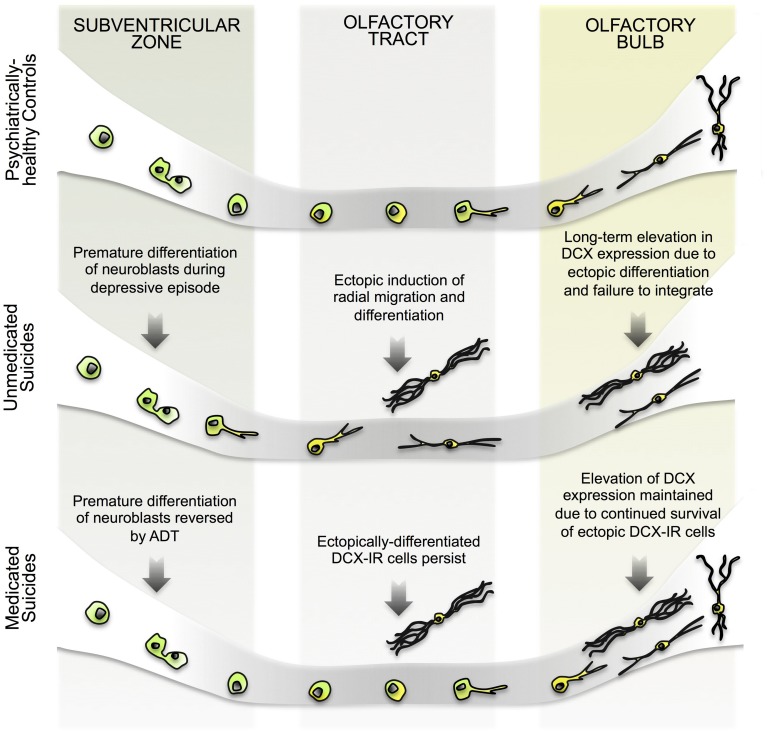FIGURE 6.
Hypothetical model of changes in human SVZ and OB neurogenesis during depressive episodes. (Top) In psychiatrically healthy subjects, Sox2-expressing progenitors in the SVZ proliferate to give rise to migratory neuroblasts which then migrate toward the OT. During tangential migration, neuroblasts begin the process of differentiation, perhaps extending a leading process, but retain an immature phenotype until they have reached the OB. Having reached the OB, neuroblasts migrate radially toward the granule cell layer and complete their differentiation, integrating into existing neuronal circuits. (Middle) In unmedicated suicides, DCX expression in the SVZ is elevated in the absence of any increase in proliferation due to the premature differentiation of neuroblasts. At this point of development, cells may co-express Sox2 and DCX, as previously reported (Ferri et al., 2004). This early differentiation of neuroblasts in turn impairs migration, and ectopically differentiating cells become trapped at points along their migratory path, including within the OB. In some cases, radial migration is elicited early, resulting in the presence of DCX-IR cells in outer layers of the OT. Alternately, cells fail to properly maintain directionality during tangential migration. In the absence of the appropriate environmental cues that instruct maturation and integration, cells differentiating ectopically may continue to express DCX longer than usual, resulting in persistently elevated DCX levels. (Bottom) Following ADT, induction of early differentiation of SVZ cells is halted, and DCX levels return to control levels as neuroblasts successfully migrate away from the region. In the OT and OB, however, previously differentiated cells persist alongside newer migrating cells. DCX levels in the OB are therefore elevated long-term, despite an absence of new ectopically differentiating cells. Future experiments may determine whether DCX expression in the OB eventually returns to control levels.

